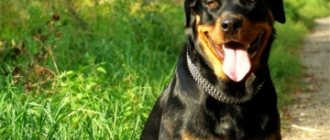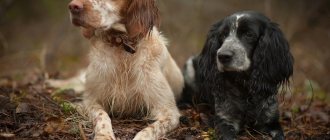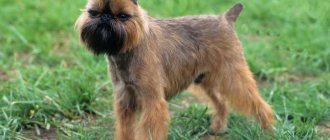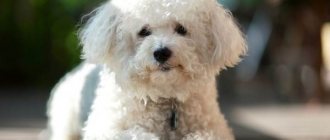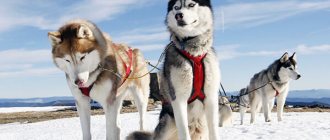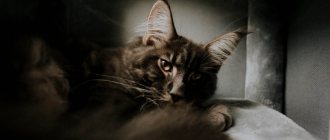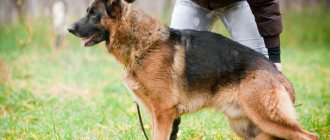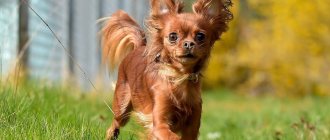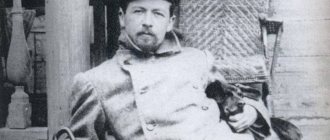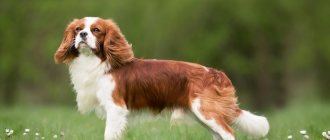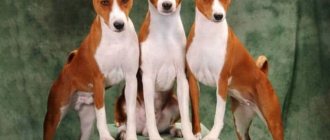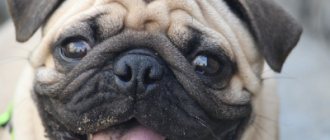The dachshund is both angel eyes and the character of a little devil. Despite its compact size, the dog of this breed is energetic and combative, which in no way prevents it from getting along well in a city apartment.
A dachshund can become a child’s best friend, a hunter, and a companion. The main thing is to take good care of her and welcome her excitement, playfulness and intelligence.
Origin, what country are dachshund dogs from?
The name of the breed comes from the merger of two German words: Dachs (badger) and Hund (dog). Loosely translated into Russian, it sounds like “badger dog.” The Germans used to call this breed Dachshund, but a shortened version has taken root in the modern language: Dackel or Teckel.
The breed originated in southern Germany around the sixteenth century. At this time, the first written mentions of dachshunds appeared as “badger dogs”, “crawling after a badger” or “badger warriors”.
It may sound surprising, but the ancestors of short-legged taxis are considered to be German hounds, known as “Deutsche Bracke”. Dachshunds inherited from these light and graceful hunters the ability to pursue an animal with a voice, endurance, excellent instincts and hunting passion. Fearless and intelligent short-legged dogs reached the beast in its lair, easily climbed into any holes, and penetrated into the narrowest holes.
The hunters appreciated the special talent of the squat dog and purposefully began to breed a new breed. In those days, hunting was considered a prestigious and expensive activity, entertainment for the nobility and wealthy people. But the modest size of dachshunds, their endurance and devotion to the owner simplified and, more importantly, made it cheaper to care for a pet, which allowed the breed to gain recognition among people with average incomes - poor burghers and the petty nobility.
Story
Until the 14th century, animals were not divided into breeds. The origin story of the pet is interesting. The formation of the variety began in southern Germany. The ancestors of burrowing dogs were considered to be a similar dog - a short hound - the hunting brak. From them, dachshunds inherited a developed body. The owners took care of these individuals and did not allow the dogs to engage in fights with game.
When the popularity of burrow hunting began to go off scale, the pets began to be trained. In Germany, almost all small game was destroyed and the process of tracking wild animals was regulated.
In Russia, dachshunds were treated coldly. Preference was given to calm, peace-loving dogs. Later everything changed. Representatives of the breed began to be imported into the country en masse, and admirers of dachshunds appeared.
What types of dachshunds are there?
In the seventeenth century there were only two types:
- low, bow-legged dogs for underground hunting;
- walking hounds with coarse hair.
Both species quickly won the love of their owners and spread throughout Germany, and by the end of the eighteenth century, beyond the country. Kennels began to appear where owners bred dogs, focusing on their own desires: some focused on hunting talents, others improved their exterior.
As dachshunds spread, it became necessary to systematize the breed. A clear division into decorative and working types had already appeared, but the standard was established only in 1870. Today they use modern standards documented in 1979 in Germany.
There is a division by wool:
- short-haired (smooth-haired):
- long-haired;
- Wire-haired.
Each of these types is also divided by size:
- standard;
- dwarf;
- rabbits (toy dachshunds).
Now the division between decorative and working types has almost disappeared. In some places in Europe, these hunters are still used for their intended purpose, but in Russia, America and other countries, dachshunds are increasingly perceived as cute pets.
Short haired dachshund
The smooth-haired or short-haired dachshund is the most common type. The dense short fur shines like polished wood and emphasizes the prominent muscles. The taxi driver looks fit and “cool macho”: there are no sagging folds or flabby areas of skin.
Longhaired dachshund
This type differs from others only in the length of the pile. The Shaggy Goldfinch boasts a beautiful, shiny, slightly wavy coat. This is the legacy of one of the ancestors - the spaniel. The second “parent” of the long-haired beauty is a standard smooth-haired dachshund. Unfortunately, this type is not very common in our country.
Wirehaired dachshund
This taxi was developed relatively recently. The wire-haired dachshund differs from its fellow tribesmen not only in its “increased shaggyness.” She has a funny mustache and goatee, and her eyes are covered with rather impressive eyebrows. Outwardly, she looks a little like an Australian terrier.
Breeders needed the hard coat to protect their pets from the teeth and claws of potential prey. And the dense pile does not allow water to pass through, which is very convenient both when “forcing water obstacles” and on bad weather days. Rain, snow, frost are not scary for a shaggy dog. And it is easy to care for such wool.
Dwarf and rabbit dachshund
Breeders of the standard dachshund used its features (short legs, modest size) to create new species. Dwarf dachshunds were originally bred to improve the breed's hunting capabilities. The smaller the dog, the more sneaky it is. And the fighting character and endurance make us treat every representative of this breed with respect, despite their size.
The ancestors of the rabbit dachshund were also representatives of the medium or small breed of German “badger warriors”. The toy dachshund is the smallest of the dachshunds. It was bred specifically for hunting rabbits, hence the name of the species. At first, the tiny dog was really only a hunter, but the touching dog quickly won the affection of lovers of “pocket” pets. And now the rabbit dachshund is usually perceived as a decorative, sofa dog.
Development
Standard dachshund cubs grow quickly and get stronger. 2 weeks after birth, dogs can already suck from a bottle and behave calmly when they are picked up. They are even capable of growling at the offender from among their brothers and sisters.
Between the second and third week, babies develop hearing. This is the time when they begin to eat solid food, stand confidently on their paws, and play. At the fourth week, dogs erupt their first teeth - the upper canines. Month-old dachshund puppies are curious and eager to explore the world. They are no longer afraid to leave their mother, they explore the territory, and try to chew on objects.
Six-month-old puppies become similar to adult dogs. At this stage, the dachshund may try to become the master of the house. But you shouldn’t allow your dog too much. Mistakes made by the owner can lead to problems with small dachshunds.
What colors do dachshunds come in?
It is a mistake to think that these dogs are only brown or black. Dachshund coat color can be:
- single-color (from yellow to dark red);
- two-tone (black or deep brown accentuated with light gray tan marks);
- spotted (the pattern resembles marble tints or tiger coloring).
Varieties of one-color color:
- completely black (small markings are visible only in good lighting);
- completely white (the nose can be black, brown and even pink);
- red (from golden to red-red, but all the fur is the same color).
There are quite unusual colors:
- cream (very light red);
- blue (from silver-steel to graphite black);
- gray (same shades as the previous one, but no bluish tint);
For wire-haired beauties, not only the listed options are relevant, but also more complex shades:
- boar color (alternating brown stripes from silver-gray to almost black);
- color of dry leaves (all shades of brown from light sand to dark chocolate).
This is not entirely fair, but for smooth-haired and long-haired boar species, color is considered a defect in the breed. And this is the only exception. Otherwise, the standard does not distinguish between different types of dachshunds. Any taxi, regardless of size, is considered purebred if the color of its coat falls within the designated framework.
First vaccinations
From birth, puppies receive the necessary antibodies against infections through their mother's milk. Dachshunds have a strong innate immune system, but at the age of two months they need to be vaccinated against common infections. Diseases that dogs are susceptible to:
- plague;
- hepatitis;
- jaundice;
- enteritis;
- adenovirus;
- rabies.
The vaccination is done at a veterinary clinic or a doctor is called to your home. Before this, deworming must be carried out (1.5-2 weeks before). If the animal has worms, the vaccination may not work. Before vaccination, make sure that the dog is completely healthy, there is no fever or other contraindications.
Injection scheme:
- at 2 months – from plague, adenovirosis, hepatitis, enteritis;
- after 2 weeks - repeated vaccinations;
- in six months – from the same diseases and from leptospirosis;
- at 1 year – from the listed infections and rabies.
Domestic and imported drugs are on sale. They can be from a single disease or complex.
Expert opinion
Anna Abramenko
An avid dog lover. Experience in veterinary medicine since 2009.
Ask a Question
Vaccination and deworming are well tolerated by dogs. Vaccinations require sterile conditions, which are found in veterinary clinics. Missed injections put your dog's health at risk.
Characteristics and description of the breed
In Russia, the dachshund has long been viewed more as an amusing pet than as a hardy hunter. Among the lovers of these dogs was Anton Pavlovich Chekhov, who described his “living creatures” this way: “I have news: two dachshunds - Brom and Hina, ugly-looking dogs. The legs are crooked, the bodies are long, but the mind is extraordinary.”
Napoleon, Picasso, the great Russian actress Ermolova, American artist Andy Warhol and other “stars” valued dachshunds for their intelligence and fighting qualities. And the explorer of the underwater depths, Jacques-Yves Cousteau, always took two taxi drivers on expeditions, whose names were Bull and Spacesuit. Today's representatives of the elite also easily succumb to the charm of bandy-legged smart girls.
Adult dog size and weight
A breed standard is a verbal description of an ideal dog. It includes both external parameters (exterior) and characteristic features of behavior, temperament, and working signs. Each country has its own standards, which may differ slightly in detail, but the main features always remain the same.
Table of parameters of various types of dachshunds.
| Species name | Height, cm | Weight, kg | Chest volume, cm | |
| boys | girls | |||
| Standard fee | 22-27 | 20-25 | 6-9 | 35 and more |
| Dwarf | 16-21 | 14-19 | until 6 | 30-35 |
| Rabbit | 12-15 | 10-13 | until 3 | no more than 30 |
An ordinary purebred adult dachshund (12-15 months) can reach a weight of 14 kg. The height of dogs is not regulated, on average they grow up to 22 cm. Small deviations are possible (up to 25-27 cm), but these parameters are within the norm.
Character
It’s quite difficult to call a dachshund a cute creature, but its long, straight back and proud head carriage involuntarily evoke respect. And the impression is not spoiled even by the wayward and stubborn character of the dog. These loyal companions and reliable guards always have their own opinions and are difficult to train.
They get along well with children, are ready to protect their owner in any situation, and love to relax in their owner’s bed. But the dachshund cannot be blamed for the latter - for centuries this breed has been trained to sleep in the same bed with a person in order to guard his sleep, protect him from rats and keep him warm on long winter nights.
Taxi drivers claim that long-haired dogs are calmer, while dogs with coarse hair are the most sociable and playful. There is no evidence of this, but the versatility of pets is revealed depending on the character and habits of the owner. With a hunter, the dachshund will be a tireless pursuer; with an artist, it will be a source of inspiration. A small dog will help politicians and leaders find balance before a difficult day. And everyone, without exception, will be flooded by an ocean of canine joy from meeting their beloved owner.
Dachshund girls
Differences in character are almost independent of the gender of the dog. Girls are a little calmer, but you need to take into account regular estrus and the need for mating. Young ladies are easier to train and more flexible. Usually girls are raised by families with children and stay-at-home owners.
Dachshund boys (males)
The dachshund boy likes to turn on “male mode.” Often this smart and assertive animal becomes the master of the situation. Overcoming a dog's stubbornness and forcing him to respect his owner is not an easy task. At the same time, male dogs are quite lazy and simple-minded. These are ideal companions for strong and active owners.
Behavior and habits
The dogs are very clean. If there is a lack of care, they can become seriously offended by their owner and even get sick. Curious and restless dachshunds often play pranks, but this is more a problem for the owners than for the little hunters. The dog will happily burrow into a heap of fallen leaves (and collect all the garbage), explore the depths of such a tempting puddle, stick his nose into some crevice, and so on. You shouldn't blame the dog for this. The breed was originally bred precisely for such actions: to find an animal, explore a hole, and capture prey. If the owner gives free rein to his pet during a walk, then at home the dog will not be too mischievous.
Aggression is not typical of these charming dogs. However, during illness (for example, when changing teeth), the animal can snap and even bite the owner. Stress, lack of attention and affection can also cause negative emotions. A very simple cure can save you from this: affection, attention, proper care and education.
Dachshunds are not born aggressive. Any negativity is the result of the actions of the owners or a painful condition.
Dachshund intelligence
Reason and independence were initially needed by the hunter to survive. When the dog climbed into the hole with the beast, he could only rely on his own strength and intelligence. Stupid or indecisive individuals simply did not survive in such conditions. Natural selection has led to the emergence of a breed with mental abilities that can be envied.
Security qualities
The ability to quickly navigate a situation, make the right decisions or defend one’s opinion helps the dachshund to perform excellent security and hunting functions. But the owners will have a hard time - finding a common language with a smart dog is possible only on the basis of mutual respect.
Required air temperature
Newborn dachshund puppies lack self-regulation of body temperature. Therefore, you need to make sure that it is at least 24 degrees Celsius where the dogs are. The first week of a dachshund's life is filled with sleeping and sucking milk. Left alone, the cub easily freezes.
Interesting article: Rules for caring for a dachshund
The normal temperature of small puppies is 35-37 degrees. After 2-3 weeks it reaches 36-37.5. In another 10-14 days it will be like that of an adult dog - 37-38.5.
Expert opinion
Anna Abramenko
An avid dog lover. Experience in veterinary medicine since 2009.
Ask a Question
To measure the body temperature of puppies, use a regular rectal thermometer.
What does a dachshund look like?
The modest size of the dachshund sometimes suggests the fragility of its body. In reality, it is a strong creature with a strong skeleton and well-developed muscles. Short, crooked legs and a low center of gravity allow the dog to stand firmly on the ground, and its voluminous chest allows it to develop high speed.
Dachshund head and teeth
An elongated muzzle with a long nose is needed by a hunter to scout an animal's hole. From above, the skull resembles a cone rounded towards the top, the profile smoothly tapers towards the nose. The transition from forehead to muzzle is also smooth, without a sharp border. The lips are pulled tight and completely cover the lower jaw. The teeth and jaw bones are strong, like those of any hunter. The mouth can open wide.
Eyes and ears
The long soft ears are set quite high, very mobile and have a rounded shape. However, this is not only decoration. Yes, they are pleasant to cuddle and stroke, but hunting dogs need long ears for a completely utilitarian purpose - it is better to “feel” the smell of prey. The nose catches the smell remaining in the air, and the long ears, touching the ground, raise small particles and dust, intensifying the smell and creating ideal conditions for the nose to work.
The medium-sized almond-shaped eyes are slightly askew, which does not spoil the impression at all. Massive brow ridges add seriousness to the dog’s appearance, and sparks of fun jump like small demons in the depths of his beautiful brown eyes.
Dachshund nose
The small hump of the nose ends in a soft black or dark brown lobe. Movable nostrils help determine the direction of the smell. When healthy, the nose should be moist and cool. This sensitive detector is equipped with 125 million olfactory receptors (humans have a modest 5 million at best).
Dog's neck and body
The dog's elongated, muscular body creates a strong support for the voluminous chest and high neck. The chest is clearly defined and equipped with a characteristic “keel”. The dachshund has 7 cervical, 13 thoracic, 7 lumbar and 3 sacral vertebrae. Intervertebral discs, elastic in youth, create an excellent buffer and act as shock absorbers.
The scruff and neck are the area where many muscles, tendons and ligaments converge, on which forward movement depends. A long neck means long muscles, greater freedom of movement and quick reactions. In addition, when the dog moves, the elongated neck is always slightly tilted forward, which shifts the center of gravity and forces the legs to “catch up” with the head. This way the pet increases speed without putting excessive strain on the muscles.
Limbs and tail
Plump and short paws are often slightly crooked, with well-developed muscles. The front legs are slightly more massive (wider and larger) than the hind legs. The strong shoulder of the forelimbs goes into a short powerful forearm. When positioned correctly, the forearm should be slightly tilted inward and seem to support the chest. The long and strong thighs end in a short tibia, attached to them at a right angle. The strong tail, thick at the base, is usually extended just below the line of the back, and in an excited state it turns into a vertical “antenna”.
Dachshund paws
The tightly clenched toes end in strong, evenly spread claws. With this “rake”, a dachshund can dig a hole more than 40 cm deep in a minute. Thick and hard finger pads are not afraid of cold or small debris. The front legs may be straight or slightly turned outward. The rear ones are slightly smaller in size and width. A standing dog distributes its body weight evenly across all four limbs.
Proper feeding
You can feed your dog natural or dry ready-made food. Her diet should include the following foods:
- meat and fish,
- cereals and cottage cheese,
- milk porridges, etc.
But whole milk should not be given to your pet, as it is not absorbed by his body.
It's important not to overdo it. The Dachshund's appetite is good, but the structure of its body requires dietary restrictions. These dogs are prone to obesity, which leads to severe stress on the spine and even paralysis.
Therefore, it is necessary to control her weight. At the slightest suspicion, a diet and consultation with a specialist is necessary.
Dachshund care and maintenance
You can start bathing your pet with detergents “from a young age,” but not more than once every 3-4 months. Baby shampoo or special products for dogs will do. Rinse aid and conditioner should not be used. At the same time, you can rinse the baby dachshund in clean water, without soap and shampoo, at least every day.
Grooming
For short-haired dogs, it is enough to dry them with a terry towel and then brush them with a medium-hard brush. Long-haired beauties require daily combing with a wide-tooth comb. Wire-haired pets can only be brushed once a week with a brush or comb. They don't need a haircut.
Nail care
Adult dogs do not need to have their nails trimmed. They should wear out naturally: during long walks on the street with asphalt or other hard surfaces. If this condition is not met, a haircut will be needed (once every 3 months). Puppies have their nails trimmed every two weeks by about a couple of millimeters.
Dental care
With proper feeding, the dachshund has virtually no problems with its teeth. If plaque does appear, you need to start brushing her teeth regularly with a special paste. Any diseases of the gums or teeth cannot be treated on your own; you need the help of a veterinarian.
Feeding your pet
To choose the right food, you should ask the breeder what he fed the entire litter. There are a couple of conditions that will make caring for your dog easier:
- mixing natural products with dry food is dangerous;
- It is advisable to transfer to another type of feeding under the supervision of a veterinarian.
A one-month-old puppy receives mother's milk or a special mixture (egg with goat's or cow's milk). Later, the child can be given cottage cheese, meat, vegetables, kefir, and porridge. Starting from 4 months, raw meat (lean) is gradually introduced into the diet.
Adult dogs thrive on ready-made food. Mixtures labeled “for medium and small breeds” or special foods are suitable for them. Food designed for large species should not be given to your pet: it contains too many calories. Gluttonous dogs are unable to refuse delicious food and quickly become obese. And a full dachshund is always a sick and sad dog.
The optimal amount of food for a dachshund is 40 g per kilogram of live weight.
Toilet training
You need to start litter box training from the very first minute your dog is in the house. The metabolism of puppies is very intense. The dog cannot wait until the next walk, so a tray is necessary. When a new pet first comes into the house, it should be immediately placed in a pre-prepared place (box, basket, lined with a diaper). You can let him roam freely only after the child relieves himself in this place. And every such “feat” is necessarily rewarded with affection and something tasty.
Training and education of a puppy and an adult dog
Raising a puppy will have to start with raising the owner. Before you bring a tiny pet into your home, you will have to take care of a lot of things:
- remove or block access to all electrical wires;
- prepare bowls, food, a place to sleep, a toilet;
- hide all shoes in an inaccessible place (and maintain this order);
- Explain to children how to handle a “living toy”;
- place indoor plants that are poisonous to dogs (ivy, carnations, poinsettia) as high as possible;
- do the same with cat bowls (if there is a cat living in the house);
- block access to bottles with household chemicals.
First, the dachshund is taught basic commands (“Come to me”, “No”, “Sit”, “Place”, etc.). Each command needs to be practiced: slightly pull the pet on a leash with the command “Come to me”, gently press on the lower back with the command “Sit”, etc. Correct execution must be reinforced with a tasty piece and stroking.
Walk
The more often you let your baby dachshund outside, the friendlier and more sociable the pet will grow up. Ideal walking pattern:
- early in the morning, immediately after getting up;
- 20 minutes after eating (preferably after each feeding);
- in the evening before bed.
For an adult dog, 2-3 walks a day, lasting at least half an hour, are necessary. You need to walk your dog on a leash with a harness, and not with the usual collar. The harness covers the dog's body and redistributes the load over the entire body area. The collar reduces all jerks or tension to one area, increasing the risk of damage to the cervical vertebrae.
Mating, pregnancy and childbirth of a dachshund dog
It is advisable to carry out the first mating at the age of 15-20 months, when the girl has already had two or three heats. Sending a young lady on a date with a gentleman at a younger age is dangerous to health: early pregnancy and childbirth are difficult and can have dire consequences.
The first signs of pregnancy are expressed in a change in the dog's behavior. She becomes more gentle, calmer, and at times seems unhealthy. The normal duration of pregnancy is 60-63 days. Viable puppies are born between 53 and 71 days after mating. Dachshunds can suffer from toxicosis. This unpleasant condition occurs at the end of the first month of pregnancy.
The owner will have to feed the expectant mother with special formulas for pregnant women or increase the content of protein products in the diet.
When weaned from mother
The longer puppies are fed their mother's milk, the stronger and healthier dogs they will grow up to be..
In the fifth week, the puppies are gradually separated from their mother, first the strongest, then all of them in turn.
At this time, the puppies already have their first baby teeth, and they can try to eat solid food . The bitch's milk supply also decreases.
It is necessary to wean from the mother not in an instant, but by alternating mother’s milk and new liquid food. Then the transition will happen painlessly.
Predisposition to disease, life expectancy of dachshunds
A happy and healthy dachshund can live 12-16 years. Contrary to popular belief, short legs do not interfere with running. The animal's spine experiences a much greater load. Improper training and excessive nutrition provoke problems with intervertebral discs (wear, displacement, hernia). In the most advanced cases, even paralysis is possible.
Loads dangerous for a short-legged pet:
- running too fast;
- jumping over obstacles;
- tug of war;
- other actions that overload the spine.
The owner should not suddenly pick up the dog or squeeze it too hard or roughly. Your pet needs a ramp to get up. Even slowly climbing stairs is dangerous; it causes severe pressure on the spine. To understand how difficult it is for a short-legged friend, the owner can try to climb an obstacle higher than his own height.
Long touching ears can cause dogs a lot of trouble. The soft ear blocks the ear canal, creating a moist and warm environment inside - ideal conditions for pathogenic microflora and the development of otitis media. The owner must ensure that no water gets into the ear canal and regularly inspect and clean the pet’s ears.
In their normal state, taxis are playful and cheerful creatures, but a sedentary, overfed dog is capable of displaying aggression. We must not forget that these are hard workers by nature. They need movement, and the more the better. Lack of physical activity leads to irritability and sometimes outright aggression. And this is not a manifestation of the pet’s bad character. In most cases, the situation changes as soon as the dog gets the opportunity to redirect emotions into physical activity.
An hour-long walk in the morning and evening saves you from “bad character” better than any medicine.
Features of hunting
At home the dog behaves calmly, but when hunting, the dachshund is unrecognizable. Having discovered the hole of a forest animal, the pet is delighted and barks to notify the owner of the find.
The four-legged helper will enthusiastically take a duck out of the river, chase a hare, and lift partridges. The dog can do all this for a long time, without a break.
The dachshund is called the royal dog. The nobility, intelligence, and endurance of a dog have no equal. The animal is capable of spending a long time in a stuffy hole, struggling, driving game to the surface.
Bred as a hunter, the dog prefers to chase the animal to shoot. Other relatives behave differently and immediately strangle the prey.
The animal quickly determines the location of the bird. In order not to spook it, the dachshund will not make a sound and will show tension, letting the owner know that game is nearby. Until the first successful shot, the four-legged hunter will not give himself away. On command, the dog will rush into the pond, make its way through the thickets and reeds, but will find the bird.
Mixed dachshunds
Metis is the result of crossing a taxi dog with other breeds, most often with a terrier or chihuahua. In everyday life and communication, such half-breeds are no worse than purebred animals. Character depends only on hereditary factors and upbringing - all claims are against mom and dad and the owner.
Whether the inability to take part in exhibitions should be considered a disadvantage of a mixed breed is a controversial issue. If the owner has chosen a touching and funny mixed breed, it is unlikely that he is going to take prizes at purebred dog competitions.
The advantages of half-breeds are their relatively low cost and resistance to disease.
Healthy eating
You should take your dog’s nutrition very seriously, because the animal’s health and longevity directly depend on it. The pet can be fed with premium complex dry food or natural food containing all vitamins and minerals.
Today, veterinarians are increasingly giving preference to commercial foods that already contain the additives the dog needs. It is very difficult to correctly select and balance natural food for your pet at home.
Prohibited : salty foods, various preserves, cookies, chocolate, food with artificial additives. Under no circumstances should you give your dog food from the table or treat it with sweets. It is necessary to follow a diet. You need to feed your dog after an active walk.
If the owner nevertheless decides to feed the dog natural food, it includes the following products:
- Cereals (rice, buckwheat).
- Meat and offal.
- Vegetables and fruits.
- Nutritional supplements and vitamins.
- Bran.
- Kefir, fermented baked milk.
A dog’s menu can be the same type and not change throughout its life.
Suitable nicknames for dachshunds
Choosing a name is a big decision. There are important and formidable options, there are funny nicknames or complex compound names. However, a long, tricky nickname sooner or later in everyday life turns into a short “household” nickname: Bunny, Musya, Mila.
It’s more convenient to immediately give the taxi driver a short name, for example:
- serious “growling” Archie, Harry, Robert, Merlin;
- affectionate Knopa, Rose, Eddie;
- funny Busya, Cactus, Hot dog.
Girls often receive the nicknames Martha, Shelly, Ursula, Fiona (especially after the release of the popular cartoon about Shrek). Boys are sometimes given pretentious names: Count, Lear, Caesar, Oscar.
How to choose a dachshund puppy
Sometimes a dachshund is chosen “for its beautiful eyes.” Yes, it’s not easy to resist this touching creature, but you need to take into account the health and pedigree of the puppy, make sure there are no hereditary diseases, and look at the living conditions of the mother and litter. If the breeder is in no hurry to show the buyer the documents or the mother’s living conditions, you should not agree to the purchase.
Pay attention when choosing a puppy:
- dachshund activity;
- good coordination of movements;
- absence of an overly bloated tummy (even after feeding);
- smooth, shiny coat;
- eyes do not water, there is no frequent blinking;
- flat back without hump or deflection;
- a scar on the hind legs from the removal of the fifth “dewclaw” toe (the operation is performed on the second day of the puppy’s life).
It is better to start your search by asking the breeder about the character and behavior of the pet. An experienced dog breeder will help you choose a pet that matches the owner.
In Russia there is a public canine organization, the National Dachshund Breed Club, which regularly holds exhibitions and monitors the preservation of breed standards. Complete, and most importantly, reliable information about dachshunds, all details on care, training and treatment, recommendations for choosing a puppy can be found on our website.
Selection rules
When buying a puppy, you need to carefully examine it, feel its joints, head, and belly.
Skin, fur, eyes, ears must be clean. Nose is wet.
You need to take an active puppy. It is better not to buy lethargic individuals out of pity. This may be a sign of poor dog health.
The seller is obliged to provide documents for the animal, information about vaccinations, and answer all questions asked.
Where to buy, prices in nurseries and “from hand”
It’s hardly worth reminding that purchasing a purebred dog “from your own hands” is risky. Even if the purity of the breed is not important, there is a risk of getting a sick animal. It is much safer to purchase a real purebred dog from a kennel where young dachshunds receive proper care and education.
Prices for private taxis are usually very low, from 2-3 thousand. There are offers even cheaper, or even “I’ll give it to good hands for free.” Kennels offer puppies at an average price of 25-30 thousand rubles. The amount depends on the pedigree, titles and awards of the parents. A purebred dog from a breeder who is passionate about his work cannot cost a penny.
When they open their eyes
Puppies open their eyes at 10-13 days . One eye may open before the other. After a week, the cub's gaze will be able to focus. At first, dogs only distinguish between light and dark.
Objects are seen dimly. During this period, puppies should be protected from bright light.
Good vision appears in the fourth or fifth week.
Pros and cons of dachshunds
Cunning and stubbornness in character go hand in hand with independence and high intelligence. Independence of character leads to the fact that dogs may refuse to follow commands. Dogs understand perfectly well what is expected of them, but they do not always follow the orders of their owner: they do not consider it necessary or simply do not want to.
Smart dachshunds learn the meaning of commands the first time. Unfortunately, this does not make life easier for the owners. The innate independence of these hunters and the ability to make decisions leads to manifestations of stubbornness and cunning. Taxi drivers will try to achieve what they want by any means.
The dog does not always consider punishment for pranks to be fair. And often this is justified: if the beloved owner had walked the pet longer or paid more attention to it, the dog would not have to chew on his slippers or push his tie under the bed.
Who is suitable for a dachshund and who is not?
In short: Dachshunds are suitable for active people with a strong character. Workaholics and homebodies should not have them. The first rule for keeping even the smallest dachshunds is high physical activity. If the owner cannot or does not want to walk with the pet at least a couple of hours a day, it is better to choose a dog of a different breed.
A long, elongated body provokes problems with the spine. Stairs and high steps are dangerous for taxis. If the future owner is unable to eliminate these threats, it is not worth choosing such a breed. In addition, they should be prohibited from climbing onto furniture or other high obstacles. And the main danger for the animal is heavy weight. If the owner is unable to resist the pleading eyes of the little glutton, health problems will soon appear.
The dachshund should not be considered as a pocket dog, a funny companion or an interior decoration. This is an intelligent and willful hunter who needs training and long walks.
Reviews
Ekaterina Lobova: “Dachshund is my favorite breed. The dogs are very smart, physically strong, and sociable. For an active family - the best option. True, without receiving attention, dogs begin to get bored and jealous of everyone.”
Vitaly Krylovich: “This animal is the most energetic, hardy, and kind. The dog is incredibly clean. The dachshund will endure for a long time, waiting for the owner to come, but will not relieve himself at home.”
Evgeny Arsenyev: “I have 3 dachshunds. All are large. There is no better breed than this. Dogs are very intelligent, easy to train, if not stubborn. Dogs detect the mood by their eyes and adapt to it.”
Representatives of the breed have stupid energy, love, and sincerity. The dog is always ready to defend its owner and protect it from aggressive people.
Reasonableness, strength, devotion are the main traits inherent in such dogs.
